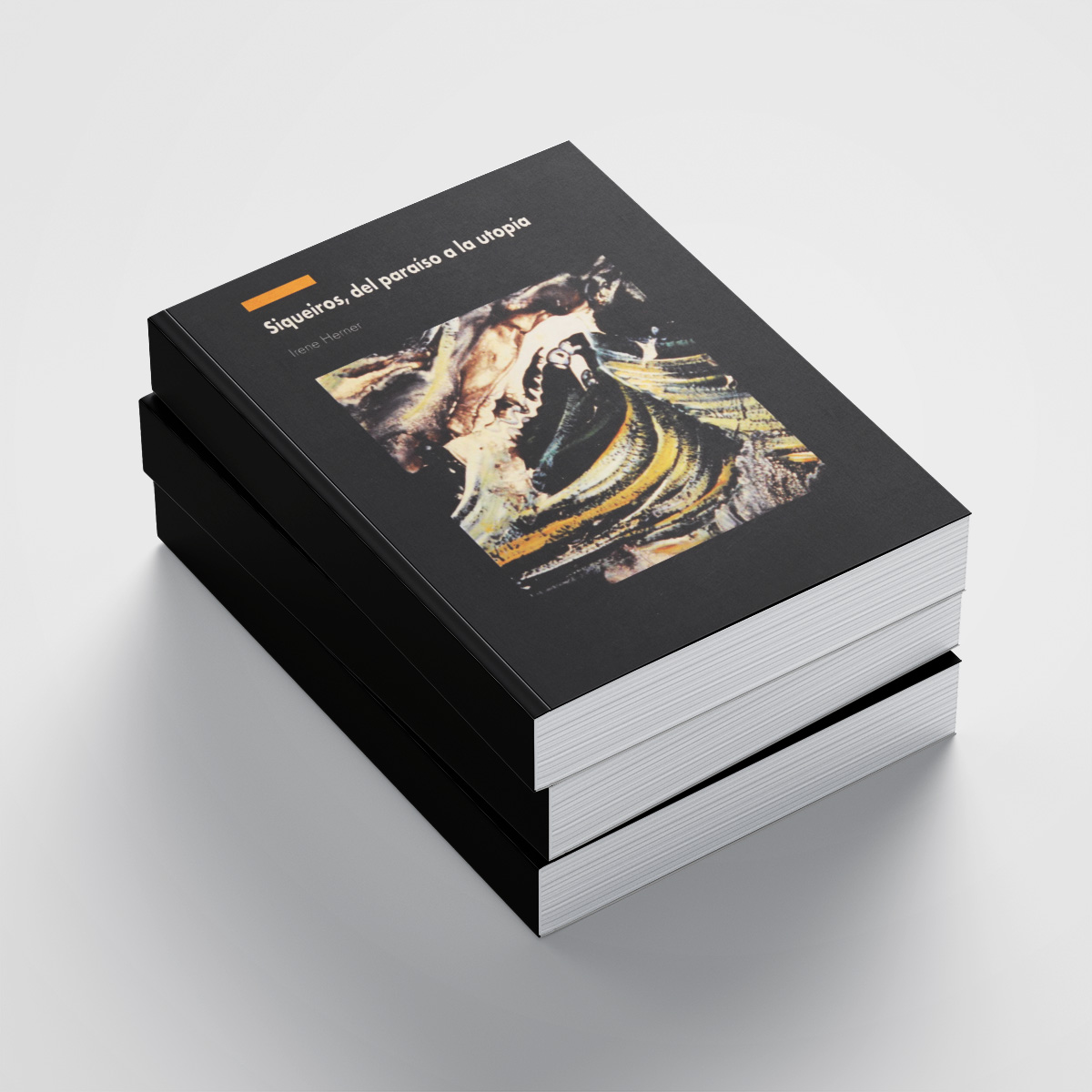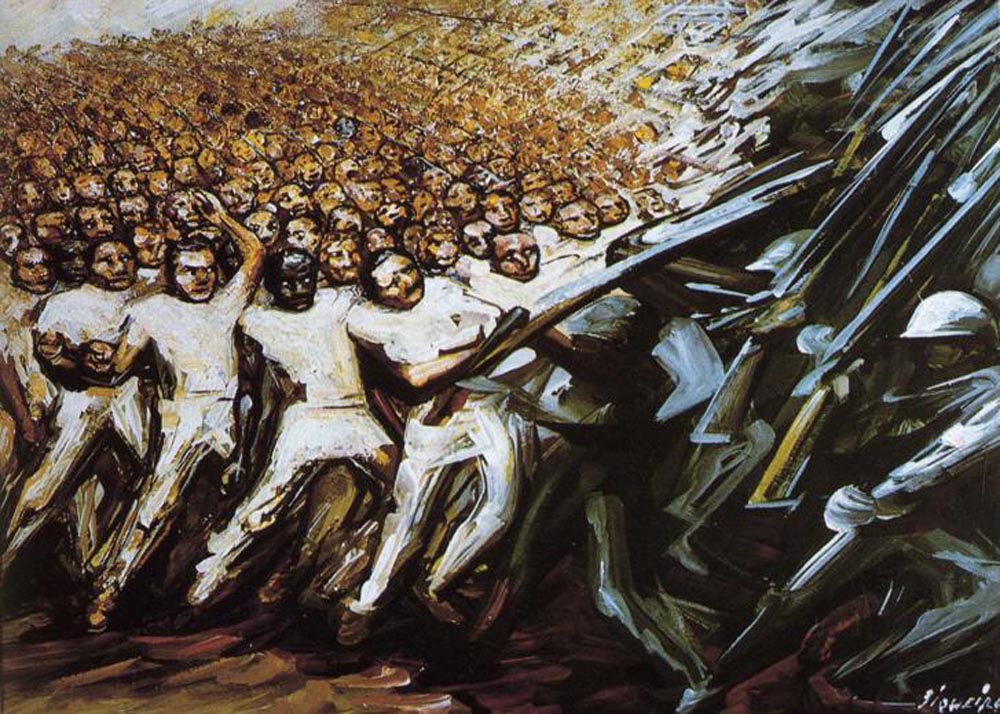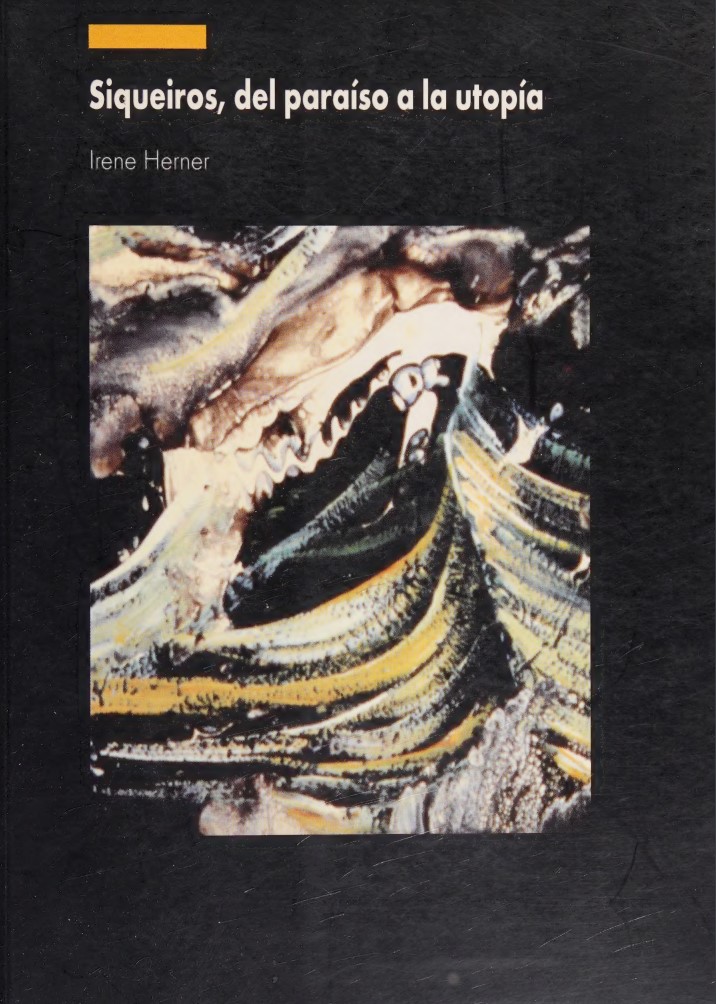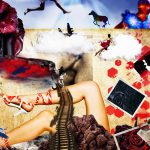
Siqueiros: from paradise to utopia
Siqueiros: from paradise to utopia.
Essay on the book: Siqueiros: from paradise to utopia.
Essay on the book: Siqueiros: from paradise to utopia.
- The experimental and irreverent art of David Alfaro Siqueiros was the promoter of an authentically Mexican artistic identity, which emerged from the Revolution, the encounter with the European avant-garde and his interest in rescuing the roots of Mesoamerican culture.
Introduction
David Alfaro Siqueiros shows us that art can emerge from the most unexpected experiences. During the Mexican Revolution of 1910, this artist joined the revolutionary forces and traveled through the mountains, valleys and ports fighting alongside the people. Without imagining then that this adventure would mark his destiny, Siqueiros discovered firsthand the reality of the peasant, the miner, the rural teacher. When he made contact with the souls of those anonymous heroes, he knew he had found his true vocation.
Years later, he was fortunate enough to move to Paris. There, his vision of art would be transformed forever after soaking up the avant-garde brushstrokes of Picasso, Léger and company. He learned that art could do more than decorate salons and offices: it was a tool to change consciences. At that time, a trip to Italy opened his eyes to the wonders of European tradition, to epic works such as those of Michelangelo.
However, it was in Mexico where he found his deepest voice. Walking through the ruins of Teotihuacan or the jungles of the Yucatan Peninsula, this tireless traveler discovered the superb legacy of his Mesoamerican ancestors. He understood that the essence of what is Mexican resided there, not in foreign canons. It was thus that Siqueiros undertook his crusade to establish an art rooted in the land and the soul of our people.
For Siqueiros, painting should be a vehicle for change. It was not about imitating currents or reviewing the past, but about breaking schemes to build the future. As he himself would say years later: “The destiny of art is not to be beautiful, but to be useful”. Few artists have been able to unify their individual talent with collective fervor as this pioneer did. Despite his limited resources, he managed to build a body of work throughout the Americas whose echoes resound to this day.
Even today, Siqueiros raises the torch of an art committed to his time. It is precisely this complex alchemy of commitment and avant-garde that deserves to be analyzed in these pages. We will explore how his eclectic formation, both political and aesthetic, forged an authentically Mexican plastic identity. We will analyze how he irreverently embodied his ideology in foundational works such as the Chapultepec Castle. Finally, we will see how his legacy crosses borders to inspire new generations of creators.
THE MEXICAN REVOLUTION SHAPED SIQUEIROS’ IDENTITY.
Siqueiros’ participation in the Mexican Revolution between 1914 and 1917 was decisive in his development as an artist. By joining the revolutionary forces, he had the opportunity to travel the vast plains of the country and witness firsthand the reality of the peasants, miners and teachers who were fighting to change their destiny. As he would later recall, this journey opened his eyes to the deep psychology of the people and revealed to him their potential as an engine of transformation.
For months, Siqueiros lived the pulse of a nation in arms. He shared the pain of defeat and the joy of triumph with those “proletarian soldiers” who gave life to the Revolution. He knew firsthand their fortitude in adversity and their yearning for dignity. These experiences, far from being simple anecdotes, deeply penetrated his being and marked him forever. If before he had cultivated a merely formalist painting, after the war he knew that his true path was to record the collective soul of that people in arms.
This is how he would recall it years later: “Our incorporation to the revolutionary army put us in direct contact with the workers, with the textile workers and with the workers of the urban centers. Our military contact, our fraternization in victory and defeat, in pain and joy, with the working soldiers, peasants, Indians and artisans, gave us a deep knowledge of their psychology”. Thanks to the Revolution, Siqueiros discovered his vocation to express his interpretation of the longings of the oppressed and to set himself up as their spokesman.
In addition to this artistic transformation, the war also meant an existential change for Siqueiros. Before, he used to recreate himself in insubstantial bohemian student revelries. However, contact with the humble combatants made him more responsible and committed. For he stripped himself forever of class prejudices and became fully incorporated with the concerns of the people as his own. A fact that would deeply mark his future production.
TRAINING MEETINGS IN OLD EUROPE
After the Revolution, Siqueiros left for Europe seeking to take his artistic vocation in new directions. In Paris, he encountered the creative ferment of Picasso, Léger and company, who questioned the canons of the past. He also witnessed the fascinating classical revival of the Italian De Chirico after the First World War. However, his greatest influence came from his fellow countryman Diego Rivera, whom he met in those lands.
Along with Rivera, Siqueiros immersed himself in the cubism that so impressed him. However, it did not take him long to transcend his initial admiration when he realized the fertile intuitive and conceptual possibilities of the volumetric handling of color and form. While Picasso opted for more subjective drifts, he intuited a massive communication beyond the board. Likewise, the dynamic flow of De Chirico’s metaphysical art and the plastic passion for the technique of the reborn Carrá showed him the potential of capturing dreamlike worlds with archaic elements.
However, his greatest ally was the Frenchman Léger, whose industrial aesthetics led him towards a popular graphic language. Unlike other self-absorbed avant-gardists, Léger advocated the use of modernity to inspire the working classes. This social vision, which was so closely connected with his early militancy, would later take shape in the Bauhaus and muralism. In this way, Europe increased Siqueiros’ interest in embodying Mexico’s mestizo identity through the anonymous heroism of its people.
RESCUING MESOAMERICAN ROOTS
After his return to Mexico, Siqueiros immersed himself in the task of rediscovering the signs of identity of his beloved land. Inspired by the classicist turn of figures such as Carrá, he fervently explored the traces left by ancient Mesoamerican cultures. His expeditions to places like Teotihuacan amazed him, for he saw in those architectural prodigies a pre-Hispanic soul still alive.
However, he was not satisfied with just admiring millenary ruins. He investigated the material and immaterial legacy of peoples who, despite the invasion, knew how to maintain their myths in the collective memory. Thus he discovered a symbolic and plastic universe in handicrafts that previously went unnoticed. Likewise, he was delighted with the cyclical wisdom of the Nahua, which transcended outdated dogmas.
This curiosity ignited in him an archaeological fervor, as he delved like an adventurer into forgotten codices. And while academicist zeal prevailed among scholars of the time, Siqueiros found spiritual treasures in every pagan image. He soon became obsessed with translating his telluric spirit into forms that would be reborn in his brush. All of this motivated him to reinterpret ancient myths, for he saw in them current metaphors for the identity of a mestizo Mexico.
By dint of immersion, he knew that an authentically Mexican art had to review roots rooted in the pre-Hispanic substratum. However, unlike other academic nationalists, he longed to fuse them with the universal influences of his time. Only in this way would his painting gain currency among the people to whom he had dedicated his revolutionary soul. In this way, he gradually shaped his utopia of a popular aesthetic, of telluric transcendence but innovative language.

CONCLUSION
Throughout his career, Siqueiros knew how to virtuously combine his roots with the winds that blew across borders. He was not content with rescuing forgotten lines of pre-Columbian peoples. He also assimilated as much as he could of avant-garde aesthetics that questioned the status quo.
However, in his painting always beats a soul deeply rooted in his homeland. From a young age he dreamed of embodying the identity of a mestizo Mexico that looked inward while dialoguing with the foreign. Thus, he gradually forged a utopia of popular art of telluric force but universal language.
In the end, rather than imitating foreign models as other nationalists advocated, he strove to find ancestral roots endowed with new sap in his brush. Only in this way did he succeed in making his work make sense among the forgotten majorities he loved so much. In this way, he transformed dreams of political redemption into plastic visions with an eternal soul of renewal.
His capacity for synthesis between the ancestral and the modern marvels to this day. It reminds us that identity flows by crossing bridges between the local and the diverse, without being anchored in past nostalgia or abandoning empathy towards the foreign. This is how nations and cultures are enriched without losing their essence. Undoubtedly, this commitment to linking the perennial with the renewing is more necessary than ever in a globalized world in constant change.
Almost a century after his first works, Siqueiros’ telluric magnetism persists. For his quests continue to transcend the strictly pictorial to offer us lenses from which to better understand our roots in constant dialogue. This is how this titan of Latin American public art managed, against all odds, to reinvent the past and envision the future.





0 comments